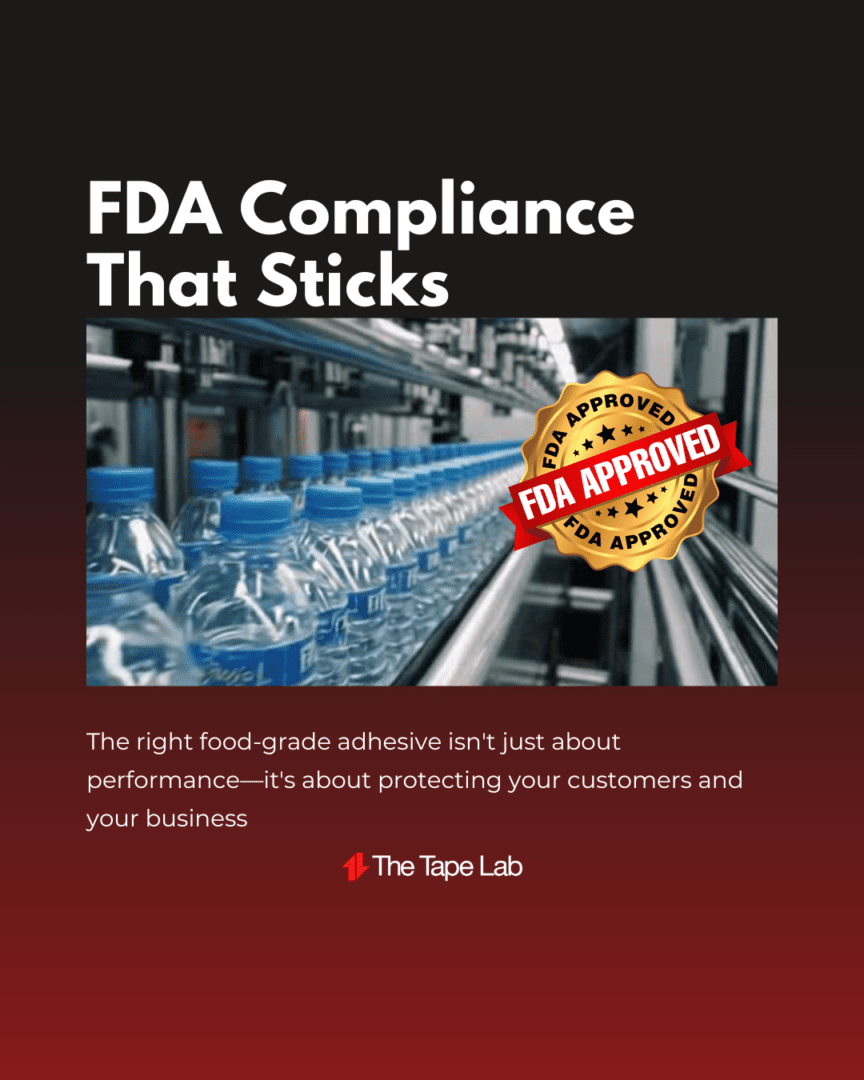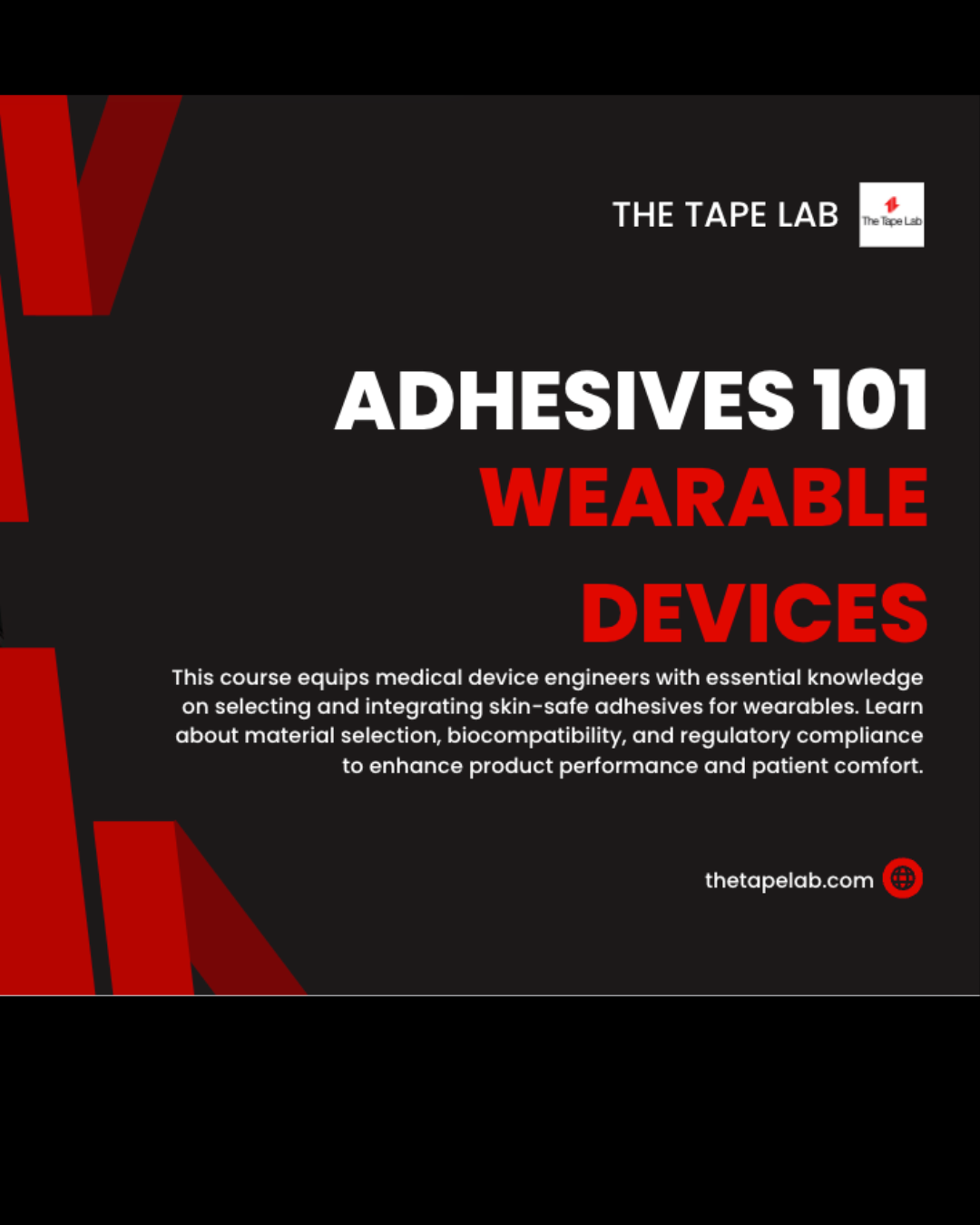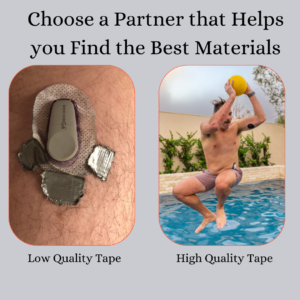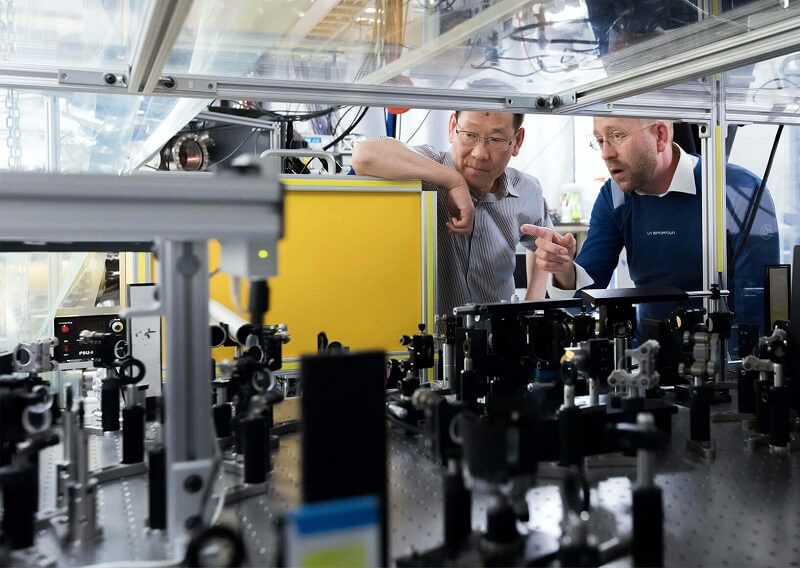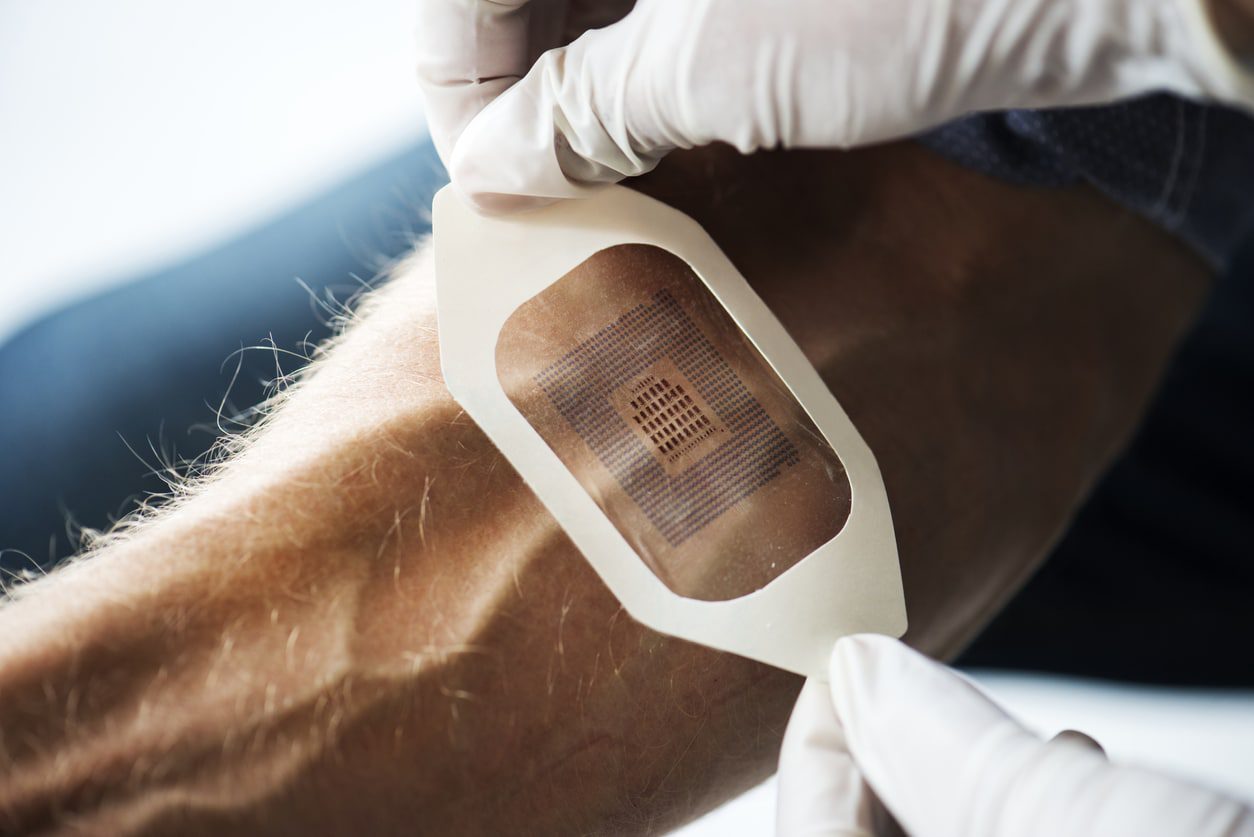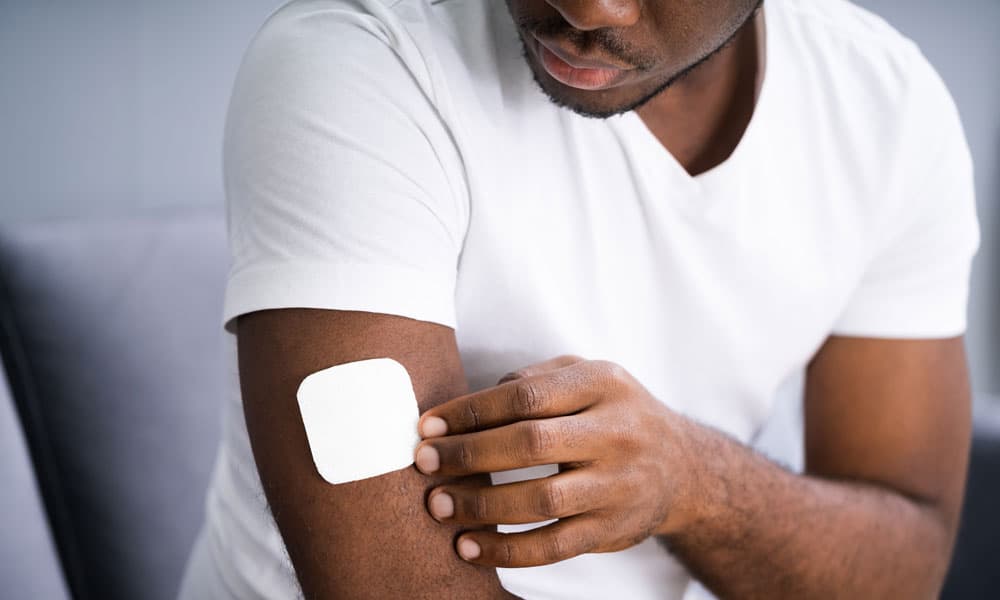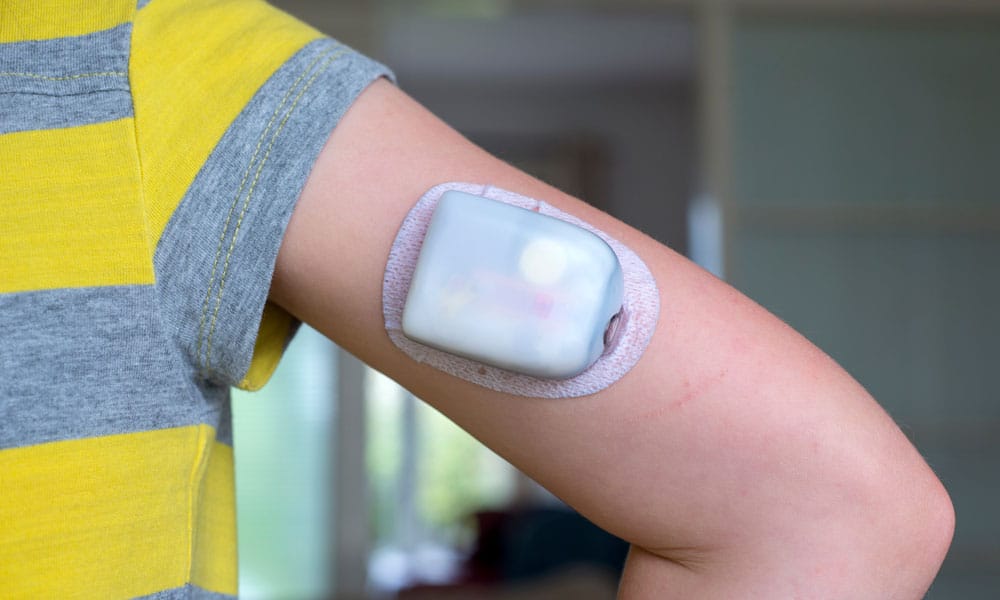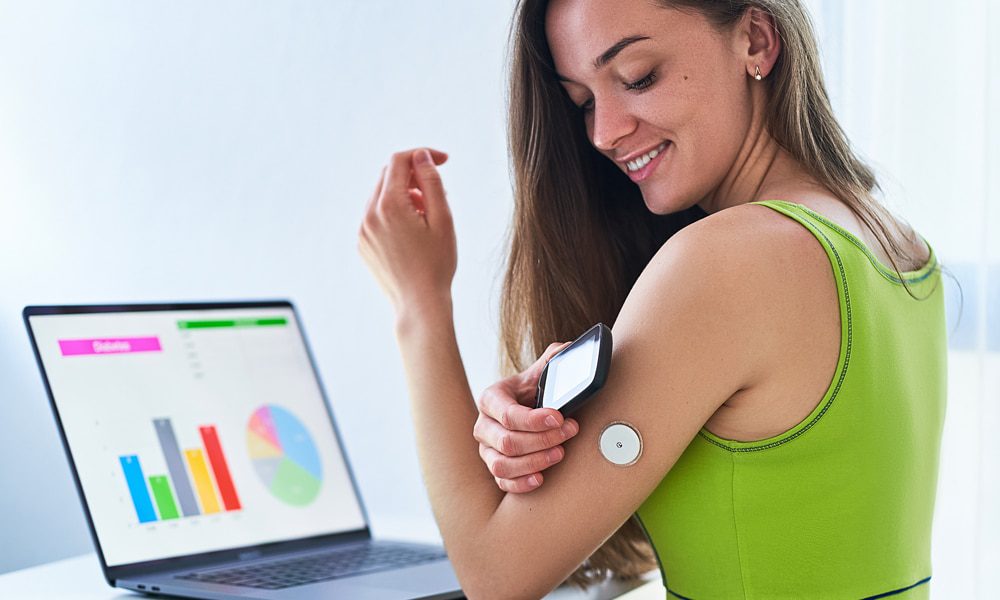Navigating FDA Requirements for Food-Contact Adhesives: A Success Story
Look, I’m going to be straight with you…
When it comes to FDA compliance for food-contact adhesives, most manufacturers are playing a dangerous game of regulatory roulette.
They slap generic labels on water bottles and hope nobody asks questions about the adhesive that’s literally ONE layer away from what people are drinking.
That’s a disaster waiting to happen.
The Regulatory Reality You Can’t Ignore
Let me drop some truth: The FDA doesn’t mess around with anything touching food and beverage products—even indirectly.
When one of the largest water bottling companies in the nation came to us with their labeling challenge, they were facing a compliance nightmare:
- Labels falling off during the recycling process
- Adhesive residue contaminating their cleaning systems
- Inconsistent application across multiple facilities
- ZERO documentation of FDA compliance
Their existing supplier couldn’t even tell them what was IN their adhesive. (Red flag, anyone?)
The Hidden World of Indirect Food Contact Regulations
Here’s what most people don’t understand: Indirect food contact is STILL food contact in the eyes of the FDA.
Under 21 CFR 175.105, any adhesive used in food packaging must:
- Contain ONLY approved substances from the FDA’s extensive lists
- Be applied in a way that prevents migration into the food
- Use only the minimum amount required for technical effect
- Be manufactured under Good Manufacturing Practices
And guess what? You need to PROVE all of this with proper documentation.
Our Engineered Compliance Solution
We didn’t just find a compliant adhesive—we engineered a COMPLETE solution:
Step 1: Material Selection Wizardry We developed an adhesive system that met two critical criteria:
- Full FDA compliance with documented composition
- Strong initial tack with clean removal properties
Step 2: Application System Redesign We developed a tab system that:
- Enabled rapid machine application
- Reduced adhesive usage while improving performance
- Maintained consistent positioning across various bottle shapes
Step 3: Compliance Documentation Package We created comprehensive documentation including:
- Complete adhesive composition analysis
- Manufacturing process validation
- Migration testing results
- Supply chain traceability records
Performance That Matches Compliance
Compliance without performance is worthless.
Our solution didn’t just check regulatory boxes—it delivered measurable improvements:
- 42% faster application speed
- Zero reportable adhesive residue in cleaning systems
- Complete elimination of non-compliant materials
From Single Facility to Company-Wide Revolution
The results? Nothing short of transformational.
What started as a trial at a single Water Bottle facility spread like wildfire:
- Week 1: Implemented at the initial facility
- Week 3: Expanded to three facilities based on performance
- Week 5: Fifteen facilities had adopted the solution
- Month 3: Company-wide implementation across all 36 locations
Why so fast? Because word travels quickly when you solve a problem everyone is facing.
The Bigger Compliance Lesson
Here’s the takeaway: FDA compliance isn’t a checkbox—it’s a strategic advantage.
When you approach regulatory requirements as an opportunity to innovate rather than a hurdle to overcome, you can develop solutions that:
- Eliminate regulatory risk
- Improve operational efficiency
- Create measurable competitive advantages
- Build customer confidence
Your Compliance Action Plan
Are you facing similar challenges with food-contact adhesives? Here’s your action plan:
- Assess your current adhesive applications for FDA compliance gaps
- Document your complete adhesive supply chain
- Validate that your manufacturing processes prevent migration
- Partner with adhesive experts who understand regulatory requirements
Don’t wait for an FDA inspection or customer audit to expose compliance gaps in your adhesive applications.
